THE TRUE STORY OF THE DEATH OF KURT COBAIN
“Kurt Cobain just committed suicide.”
The voice on the other end of the phone was my Rolling Stone editor.
“What!?” I exclaimed, shocked out of my sleep.
“Turn the radio on! How quickly can you get to Seattle?”
That day, I flew to Seattle to mourn the end of an era and the tragic loss of a life. Of an artist, a husband, a father, and a damn funny, sensitive, brilliant, tortured man.
I often think of Kurt today, in this time when the culture is standing up to bullies and bigots. He was a lone voice doing this a quarter century ago. And he was so much more.
This is the full, in-depth story of the circumstances leading up to his suicide. The original, shorter version won an ASCAP Deems Taylor Award for excellence in journalism.
This expanded version has never been published online before in its entirety. It includes a significant degree of additional reporting and research from after the magazine was published, as well as large sections that were cut for space.
THE DOWNWARD SPIRAL
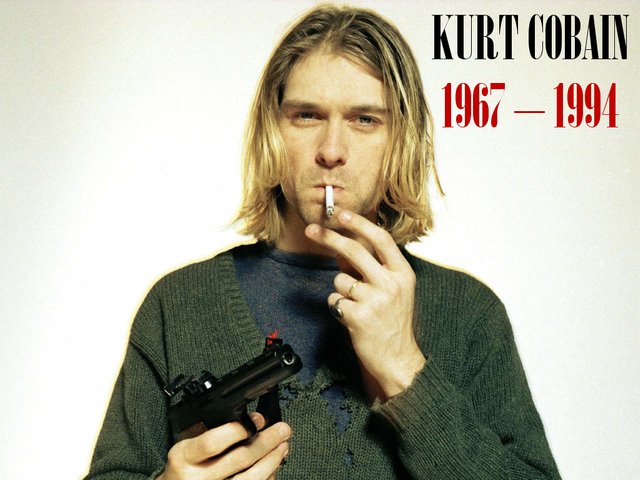
On April 8, shortly before 9 a.m., Kurt Cobain's body was found in a greenhouse above the garage of his Seattle home. Across his chest lay the 20-gauge shotgun with which the 27-year-old singer, guitarist and songwriter ended his life. Cobain had been missing for six days.
Gary Smith, an electrician installing a security system in the house, discovered Cobain dead. "At first I thought it was a mannequin," Smith said afterward. "Then I noticed it had blood in the right ear. Then I saw a shotgun lying across the chest, pointing up at his chin."
Though the police, a private-investigation firm and friends were on the trail, his body had been lying there for two and a half days, according to a medical-examiner's report. A high concentration of heroin and traces of Valium were found in Cobain's bloodstream. He was identifiable only by his fingerprints.
Mark Lanegan, a member of Screaming Trees and a close friend of Cobain's, says he didn't hear from Cobain that last week. "Kurt hadn't called me," he says. "He hadn't called some other people. He hadn't called his family. He hadn't called anybody." Lanegan says he had been "looking for [Kurt] for about a week before he was found. . . . I had a feeling that something real bad had happened."

Mark Lanegan and Cobain.
Cobain's friends, family and associates had been worried about his depression and chronic drug use for years. "I was involved in trying to get Kurt professional help on numerous occasions," says former Nirvana manager Danny Goldberg, now president of Atlantic Records. It wasn't, however, until eight days after Cobain returned to Seattle from Rome to recuperate from a failed suicide attempt in March that those close to him realized that it was that it was time to resort to drastic measures. Cobain had gone "cuckoo," says a spokesperson for Gold Mountain Entertainment, the company that manages Nirvana and Courtney Love's band Hole.
Those who were friends with Cobain and his wife, Courtney Love, report an increase in domestic disputes during that period, including instances when Love was forced to spend nights away from the house in order to escape Cobain's erratic behavior. Cobain had even told a few friends that he was worried Love was having an affair.
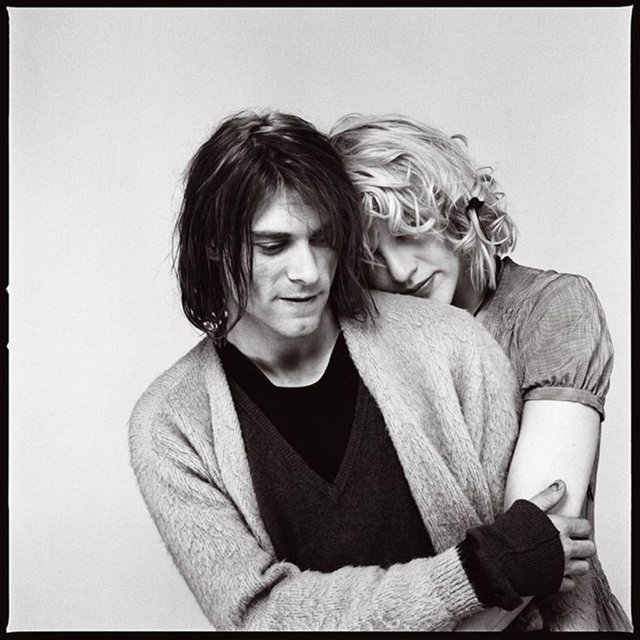
His relationship with Nirvana was just as rocky. In fact, Love told MTV that Cobain said to her in the weeks after Rome: "I hate it. I can't play with them anymore." She added that he only wanted to work with Michael Stipe of R.E.M.
"In the last few weeks, I was talking to Kurt a lot," Stipe said in a statement. "We had a musical project in the works, but nothing was recorded."
On March 18, a domestic dispute escalated into a near disaster. After police officers arrived at the scene, summoned by Love, she told them that her husband had locked himself in a room with a .38-caliber revolver and said he was going to kill himself. The officers confiscated that gun as well as a bottle of "assorted," unidentified pills that the singer had on him. Love told the officers where Cobain had stashed a Beretta .380 handgun, a Taurus .38 handgun, a Colt semiautomatic rifle, and 25 boxes of ammunition, all of which were confiscated. Though, later that night, Cobain told officers that he hadn't actually been planning to take his own life, the police report nonetheless described the incident as a "volatile situation with the threat of suicide." No one was arrested, and Cobain "left the residence" afterward.
Four days later, Cobain and Love took a taxi from their home in Seattle's Madrona neighborhood to the American Dream used-car lot near downtown Seattle. The taxi driver, Leon Hasson, says the couple fought the whole ride there. Still arguing, Cobain and Love entered the lot. According to lot owner Joe Kenney, Love was upset because, two days after they had purchased a Lexus on January 2, Cobain had returned it. Love wanted the car, but Cobain wanted something less ostentatious. Kenney adds that Love appeared unstable, and dropped several pills while walking toward a bathroom.
By this time, Cobain's family members, band mates and management company, had begun talking to a number of intervention counselors about treating Cobain's increasing heroin and psychological problems. One of these specialists was Steven Chatoff, executive director of Anacapa by the Sea, a behavioral health center for the treatment of addictions and psychological disorders, in Port Hueneme, Calif. "They called me to see what could be done," says Chatoff. "He was using, up in Seattle. He was in full denial. It was very chaotic. And they were in fear for his life. It was a crisis."
Chatoff began interviewing friends, family members and business associates in preparation for enacting a full-scale intervention. According to Chatoff, someone then tipped off Cobain, and the procedure had to be canceled. Nirvana's management, Gold Mountain, claims that it found another intervention counselor and told Chatoff a small lie to turn down his services politely.
Meanwhile, Roddy Bottum, an old friend of Love and Cobain's and the keyboardist for Faith No More, flew from San Francisco to Seattle to care for Cobain. "I really loved Kurt," Bottum says, "and we got along really well. I was there to be with him as a friend."
Nirvana guitarist Krist Novoselic staged his own separate intervention with Cobain, but the most grueling confrontation took place on March 25. That afternoon,, roughly 10 friends, including band mates Novoselic and Pat Smear, Nirvana manager John Silva, longtime friend Dylan Carlson, Love, Goldberg, and Janet Billig, manager of Love's band Hole (Bottum had already gone home) gathered at Cobain's home on Seattle's Lake Washington Boulevard to take a different approach with a new intervention counselor. As part of the intervention, Love threatened to leave Cobain, and Smear and Novoselic said they would break up the band if Cobain didn't check into rehab. At first, Cobain was unwilling to admit he had a drug problem, and did not believe that his recent behavior had been self-destructive. However, by the end of the tense five-hour session, Cobain's resolve had weakened and he agreed to enter a detox program in Los Angeles later that day. He then retired to the basement with Smear, where they rehearsed some new material.

Cobain and Novoselic.
However, once at the Seattle airport, Cobain changed his mind and refused to board the flight. Love had hoped to coax Cobain into flying to Los Angeles with her so that the couple could check into rehab together. Instead, she wound up on a plane with Billig. (The couple's daughter, Frances Bean, and a nanny followed the next day.) Love would say that she regretted leaving Cobain alone ("That '80s tough-love bullshit, it doesn't work," she said in a taped message during a memorial vigil for Cobain two weeks later). After a stop in San Francisco, Billig and Love flew to Los Angeles, and on the morning of the 26th, Love checked into a $500-a-night suite in the Peninsula Hotel, in Beverly Hills, and began an outpatient program to detox from drugs (Gold Mountain says it was tranquilizers).
Back in Seattle that evening, Cobain stopped by a woman friend and drug dealer's house in the upscale, bohemian Capitol Hill district. "Where are my friends when I need them?" she told a Seattle newspaper Cobain said to her. "Why are my friends against me?"
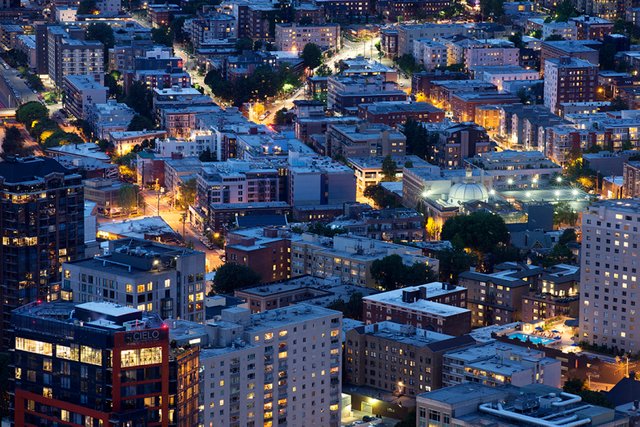
Capitol Hill neighborhood on the northeastern edge of downtown Seattle.
Cobain stayed in Seattle five more days before agreeing to go to Los Angeles for treatment on March 30th. Before leaving, he stopped by Dylan Carlson's condominium in the Lake City area of Seattle to ask for a gun because, Carlson says Cobain told him, there were trespassers on his Madrona property.
"He seemed normal, we'd been talking," Carlson, who was the best man at Cobain and Love's wedding, says. "Plus, I'd loaned him guns before." Though there is no registration or waiting period for shotguns in Seattle, Carlson believes Cobain didn't want to buy the shotgun himself because he was afraid the police would confiscate it, since they had taken his other firearms after the domestic dispute that had occurred 12 days earlier.
Cobain and Carlson headed to Stan's Gun Shop nearby and purchased a six-pound Remington Model 11 20-gauge shotgun and a box of ammunition for roughly $300, which Cobain gave Carlson in cash.
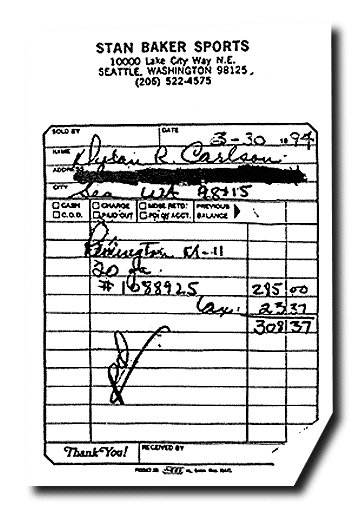
Cobain’s gun receipt from Stan’s Gun Shop, March 30, 1994.
"He was going out to L.A.," Carlson says. "It seemed kind of weird that he was buying the shotgun before he was leaving. So I offered to hold on to it until he got back." Cobain, however, insisted on keeping the shotgun himself. The police believe that Cobain brought the weapon home and stashed it in a closet. Novoselic reportedly drove Cobain to the airport. Smear and a Gold Mountain employee met Cobain in Los Angeles and drove him to the Exodus Recovery Center, in the Daniel Freeman Marina Hospital, in Marina del Rey, Calif. Cobain had spent four miserable days detoxing at Exodus in 1992, but left the center before his treatment was completed.
Despite his inability to proceed with his plan, Chatoff says he spoke with Cobain by phone several times before Cobain left for Los Angeles. "I was not supportive of that at all," says Chatoff of Cobain's admittance to Exodus, "because that was just another detox 'buff and shine.'"
Cobain spent two days at the 20-bed clinic. He talked to several psychologists there, none of whom considered him suicidal. Though Frances Bean and her nanny visited him, Love never did. On April 1 Cobain called Love, who was still at the Peninsula. "He said, 'Courtney, no matter what happens, I want you to know that you made a really good record,'" she later told a Seattle newspaper. "I said, 'Well, what do you mean?' And he said, 'Just remember, no matter what, I love you.'" (Hole were due to release their second album, Live Through This, 11 days later.) That was the last time Love spoke to her husband.
According an artist known as Joe Mama, a longtime friend of the couple's who was the last to visit Cobain at Exodus, "I was ready to see him look like shit and depressed. He looked so fucking great." An hour later, Cobain, in Love's words, "jumped the fence." Actually, it was a six-foot-plus brick wall surrounding the center's patio.
Though Exodus is a low-security clinic, and Cobain could have walked out the door if he had wanted to, he had something else in mind. One of Cobain's visitors remembers, "When I went to visit him, Gibby Haynes [of the Butthole Surfers] was in there with him. I don't know Gibby, but he's a nute. He was jabbering a mile a minute about people who had jumped over the wall there, stuff like 'Bob Forest went over the wall five times.' Kurt probably thought it would be funny."
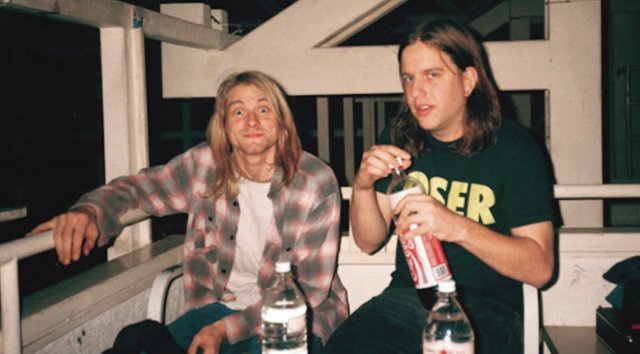
Gibby Haynes and Cobain.
At 7:25 p.m., Cobain told the clinic staff he was stepping out onto the patio for a smoke and scaled the wall. "We watch our patients really well," says a spokesperson for Exodus. "But some do get out." Most of Cobain's friends and business associates who were in L.A. were at a concert by another Gold Mountain client, the Breeders, oblivious to the fact that he had escaped.
"After Kurt left, I was on the phone with Courtney all the time," says Mama. "She was really freaked out, so we drove around looking for him at all the places he might have gone. She was really scared from the beginning. I guess she could tell."
But Cobain was already on his way back to Seattle. He returned home on a Delta flight five and a half hours after his escape. By the time Love cancelled his Seafirst bank credit card and hired private investigator Tom Grant to track him down the following day, it was too late. In fact, according to police, cancelling the credit card made it even more difficult to find Cobain because Seafirst only records the type of business and amount of money for attempted charges on cancelled cards, not the precise location of the business. Love also reportedly hired a second private investigator to watch Cobain's drug dealer's home, a woman Love is said to have been jealous of to begin with.
When Cobain returned to his Madrona home, he found his former nanny, Michael DeWitt (whose nickname is Cali), staying there. "I talked to Cali, who said he had seen [Kurt] on Saturday [April 2]," says Carlson, adding that DeWitt described Cobain as looking ill and acting weird, "but I couldn't get ahold of him myself."
Neither could anybody else. The police believe Cobain wandered around town with no clear agenda in his final days. A taxi supervisor reports that Cobain was driven to a gun shop to buy shotgun shells (a receipt for the ammo was later found at Cobain's house). Neighbors say they spotted Cobain in a park near his house during this period, looking ill and wearing an incongruously thick jacket. Cobain reportedly spent time with some junkie friends, shooting up so much that they kicked him out because they were worried that he'd OD on them. Cobain is also believed to have spent time at his second home, in Carnation, Wash, where a sleeping bag was found. Next to it was a picture of the sun drawn in black ink above the words "cheer up," and an ashtray filled with cigarettes--one brand was Cobain's, the other wasn't.
On Sunday, April 3, someone (possibly Cobain) attempted to make several charges to his credit card. The amounts, ranging from $1,100 to $5,000, were apparent attempts to get cash. The following day, two more charge attempts were made, this time to get $86.60 worth of flowers. It was this same day that Cobain's mother, Wendy O'Connor, filed a missing-person's report. She told police that Cobain might be suicidal and suggested that they look for him at a particular three-story brick building, described as a location for narcotics, in Capitol Hill.
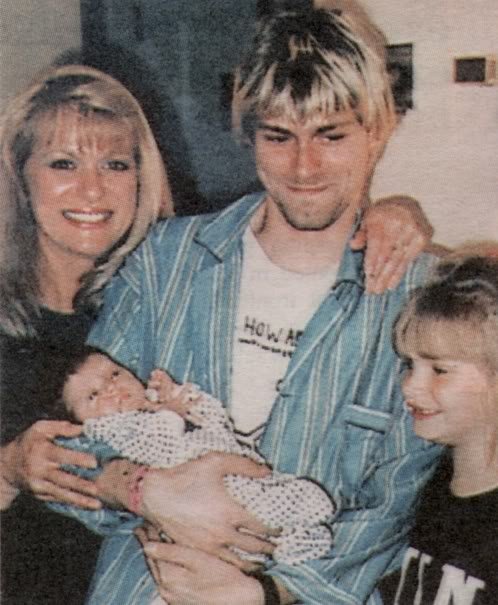
L to R: Cobain’s mother Wendy O’Connor, newborn Frances Bean, Cobain, and half-sister Breanne O’Connor.
Sometime on or before the afternoon of April 5, Cobain barricaded himself in the greenhouse above his garage by propping a stool against its French doors. The evidence at the scene suggests that he removed his hunter's cap--which he wore when he didn't want people to recognize him--and dug into the cigar box that contained his drug stash. He completed a one-page note in red ink. The top of the note was written in small handwriting, and never directly referred to suicide, leading some to believe it had been written ahead of time. The second half of the note was in much larger writing, and made direct reference to suicide (police handwriting experts have determined that both halves were written entirely by Cobain). Writing to Love, daughter Frances Bean, friends and fans, Cobain spoke of the great empty hole he felt had opened inside him. He also expressed his hope that Frances Bean's life would not turn out like his own.
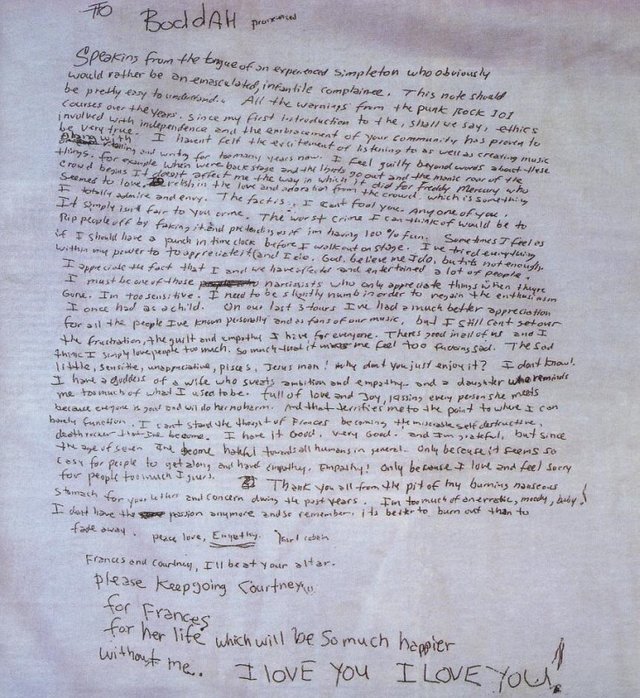
Cobain’s suicide note.
"I haven't felt the excitement of listening to as well as creating music, along with really writing something for too many years now," Cobain scrawled, adding that "when we're backstage and the lights go out and the manic roar of the crowd goes out, it doesn't affect me the way in which it did for Freddie Mercury. . . . I've tried everything that's in my power to appreciate it, and I do, God, believe me, I do. But it's not enough. I appreciate the fact that I and we have affected and entertained a lot of people. I must be one of those narcissists who only appreciate things when they're alone. I'm too sensitive. I need to be slightly numbed in order to regain the enthusiasm I had as a child. On our last three tours I've had a much better appreciation of all the people I've known personally and as fans of our music. . . . I love and feel for people too much, I guess. Thank you all from the pit of my burning, nauseous stomach for your letters and concern during the last years. I'm too much of an erratic, moody person, and I don't have the passion anymore, so remember it's better to burn out than to fade away."
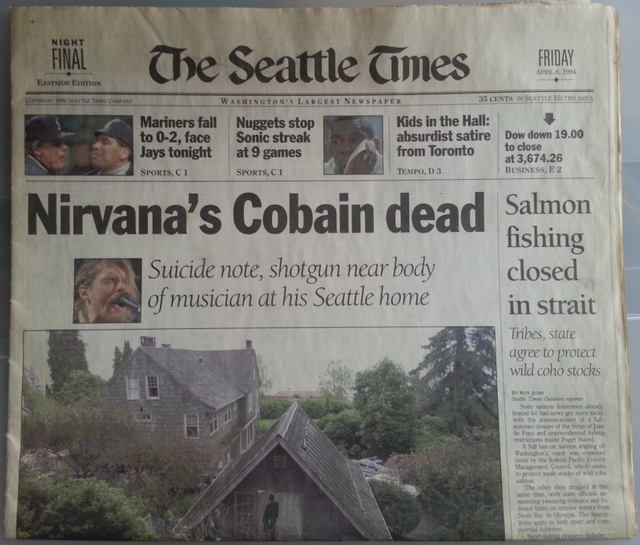
The first time Cobain's troubles made tabloid headlines was in August 1992, after an infamous Vanity Fair article was published in which its writer, Lynn Hirschberg, reported that Love had used heroin while pregnant with Frances Bean. (Love has denied this.) As a result of subsequent media attention, the Cobains were not allowed to be alone with their newborn daughter for one month.
After a long and taxing battle with children's services in Los Angeles, where they were then living, the couple regained custody of the girl. In a September 1992 Los Angeles Times article, Cobain admitted to "dabbling" in heroin and detoxing twice in the past year--a strategic move, according to an insider, to mollify children's services. In subsequent interviews, Cobain never admitted to using heroin after he and Love had detoxed before Frances Bean was born.
In the spring of 1993, after the band had recorded In Utero with producer Steve Albini in Minnesota, another frightening series of events began to unfold. First came good news: On March 23, 1993, following a Family Court ruling in Los Angeles, children's services stopped its supervision of the Cobains' child-rearing. But just six weeks later, on May 2, Cobain came home (then in Seattle's Sand Point area) shaking, flushed and dazed. Love called 911. According to a police report, Cobain had taken a large dose of heroin. As Cobain's mother and sister stood by, Love injected her husband with buprenorphine, an illegal drug that can be used to awaken someone after a heroin overdose. She also gave Cobain a Valium, three Benadryls and four Tylenol tablets with codeine, which caused him to vomit. Love told the police this kind of thing had happened before.
A month later, on June 4, the police arrived at the Cobains' home again after being summoned by Love. The two had been fighting over Cobain's drug use, a source says Cobain later told him. However, Love told the police that she and Cobain had been arguing over guns in the house.
Cobain was booked for domestic assault (he spent three hours in jail), and three guns found at the house were confiscated. One of those weapons, a Taurus .380, had been loaned to Cobain by Carlson. (Cobain picked up the guns a few months later; they were again confiscated in the March 1994 domestic dispute.)
Seven weeks later, on the morning of July 23, Love heard a thud in the bathroom of the New York hotel where the couple was staying. She opened the door and found Cobain unconscious. He had overdosed again. Nevertheless, Nirvana performed that night at the Roseland Ballroom. Fans never knew the difference.
A few days later, Cobain returned to Seattle. One friend says: "He just kept to himself. Every time he came back after a tour, he would get more and more reclusive. The only people that saw him a lot were Courtney, Cali and Jackie [Farry, a former babysitter and assistant manager]."
Though, according to Gold Mountain, Cobain's clinical depression had been diagnosed as early as high school, according to Gold Mountain, the singer never seemed to fully believe he had a problem. "Over the last few years of his life," says Goldberg, "Kurt saw innumerable doctors and therapists."
Many who were close to Cobain remember that the musician frequently suffered dramatic mood swings. "Kurt could just be very outgoing and funny and charming," says Butch Vig, who produced Nevermind, "and a half-hour later he would just go sit in the corner and be totally moody and uncommunicative." "He was a walking time bomb, and nobody could do anything about it," says Goldberg.
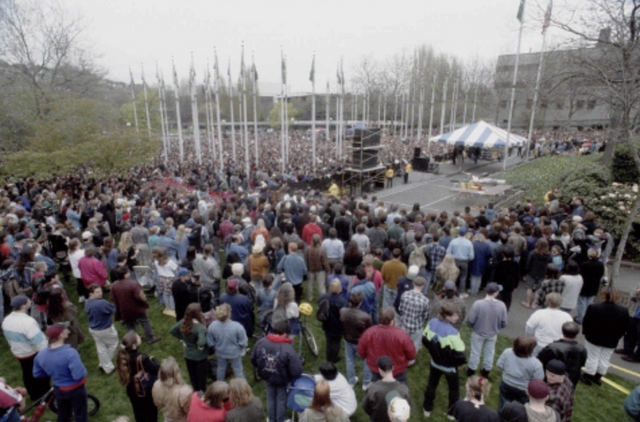
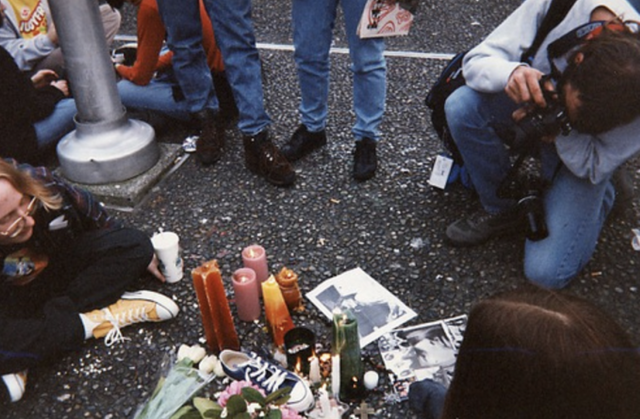
Vigil in Seattle, April 10, 1994.
It wasn't until hours after this candlelight vigil that Seattle experienced its first possible Cobain-related suicide. After returning home from the vigil, Daniel Kaspar, 28, ended his life with a single bullet.
The effects of Cobain's suicide reverberated around the globe. In Australia, a teenager committed suicide in an apparent tribute to Cobain. In southern Turkey, a 16-year-old fan of Cobain's locked herself in her room, cranked Nirvana music and shot herself in the head. Friends said she had been depressed ever since hearing about Cobain's death.
Elsewhere, on the evening of the vigil, Cobain's family scheduled a private memorial service at the Seattle Unity Church a few blocks away from the Seattle Center. There was no casket; Cobain's body was still in the custody of the medical examiners (he was later cremated). The Rev. Stephen Towles began the service by telling some 150 invited guests: "A suicide is no different than having our finger in a vise. The pain becomes so great that you can't bear it any longer."
Novoselic delivered a short eulogy afterward. "We remember Kurt for what he was: caring generous, and sweet," he said. "Let's keep the music with us. We'll always have it forever."
Carlson read verses from a Buddhist poet. Love, clad in black, read passages from the Book of Job and some of Cobain's favorite poems from Arthur Rimbaud's Illuminations. She told anecdotes about Cobain's childhood and read from his suicide note. She included parts that she had not read on tape for the vigil. "I have a daughter who reminds me too much of myself," Cobain had written.
Gary Gersh, who signed Nirvana when he was with Geffen (he is now president of Capitol Records), read a faxed eulogy from Michael Stipe. Last to speak was Danny Goldberg. "I believe he would have left this world several years ago," Goldberg said, "if he hadn't met Courtney."
When the service ended, Love headed to the Seattle Center nearby, where the vigil had just ended. Fans were burning flannel shirts, shouting for Nirvana music (which they got) and taunting the police, who were trying unsuccessfully to keep them out of the public fountain. Love mingled almost unnoticed in the sea of mourners, clutching her husband's suicide note in her hand. She disappeared and then reappeared with an armload of Cobain's old clothes and possessions, which she distributed to his fans. She described herself to bystanders as "angry" and emotionally "messed up."
Kim Warnick of the local group Fastbacks surveyed the scene with KNDD-FM music director Marco Collins, who had helped organize the mass memorial. "He would have loved this," she told him.
"All these kids," Collins replied, as he surveyed the undernourished teens with dyed hair, troubled eyes and torn jeans milling around him, "they look like they came from his world."
As of this writing, neither Grohl nor Novoselic has told his story to the press, though, along with Cobain's family and Gold Mountain, they will be setting up a scholarship fund for Aberdeen, Wash., high-school students with "artistic promise regardless of academic performance."
Children's services departments in both Seattle and Los Angeles confirmed that they had no caseworkers assigned to Frances Bean. Though Cobain did have a will, it was unsigned and therefore invalid at the time of his death. With no will, Love and Frances Bean have become the only heirs to his estate (which includes assets of over $1.2 million and debts of less than $740,000). Love, meanwhile, donated all of Cobain's guns, including the one he used to kill himself, to Mothers Against Violence in America.
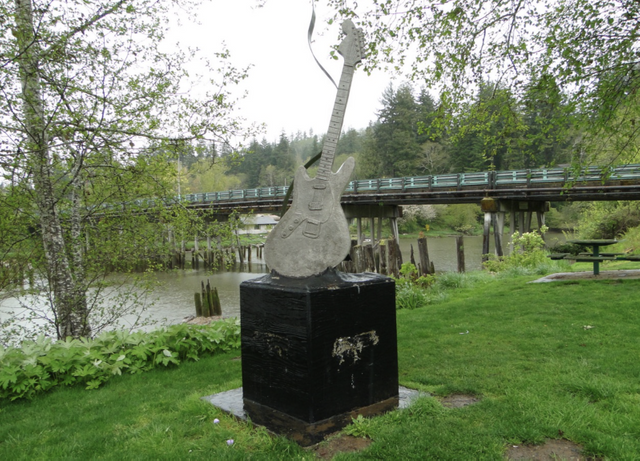
Kurt Cobain Memorial Park, Aberdeen, Washington.
Love spent time holed up in Seattle for a while before flying to New York, where she went on a lingerie shopping spree. After Love returned to Seattle, another tragedy unfolded around her. Kristen Pfaff, the bassist in her band, Hole, was preparing to move from Seattle to Minneapolis on the evening of June 15 when she locked herself in her bathroom around 9:30 p.m. The following morning, Paul Erickson, the bassist in the Minneapolis band Hammerhead, who had spent the night at the house, found her slumped over the side of the tub, kneeling in five inches of water. Police say they found "syringes and what appeared to be narcotic paraphernalia" in a purse on the bathroom floor, but were unable to determine the cause of her death.
"It was an accident," Hole drummer Patty Schemel told a Seattle newspaper afterward. "She loved life and this shouldn't have happened."
Courtney Love communicated her grief on online, where she had been engaging in an active discourse with fans, friends, and enemies for several weeks. "Pray for [Kurt] and Kristen," she wrote. "They hear it i know . . . . My friend has been robbed of her stellar life my baby has no dad . . . . Thank you for respecting the finest man who ever lived, that he loved a scum like me is testament enough to his empathy."
Suicide is not the answer. If you are ever considering harming yourself, remember, there is hope:
In the United States, contact the Suicide Prevention Lifeline at 1-800-273-8255, or go to their website https://suicidepreventionlifeline.org
You can also contact the Crisis Text Line at 741741 or visiting https://www.crisistextline.org.
International suicide prevention resources: http://suicideprevention.wikia.com/wiki/International_Suicide_Prevention_Directory
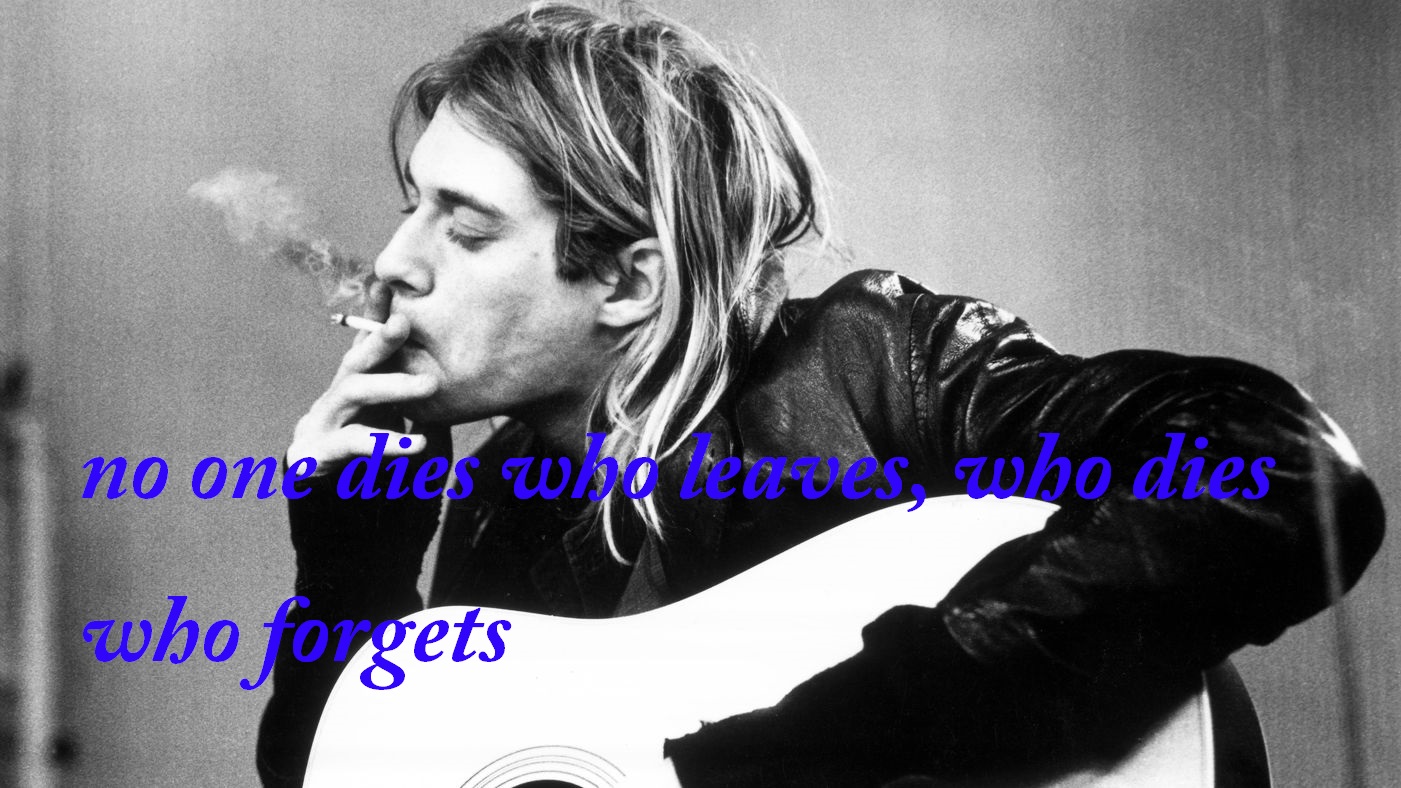
Depressive perfectionist Kurt Cobain and his galumphing buddy Krist Novoselic escaped the run-down lumber town of Aberdeen to conquer the world before Cobain decided that rock fame could never match up to the high standards he had expected and shot himself, his body lying undiscovered for several days. This resonant tale has inspired a whole Nirvana industry. Its grim conclusion was re-enacted by Gus Van Sant in his overlooked movie Last Days, while ever heftier tomes promise to come closer to revealing what drove Cobain to such extremes (in fact, the three aitches - heroin, heredity and a harridan - pretty much cover it).